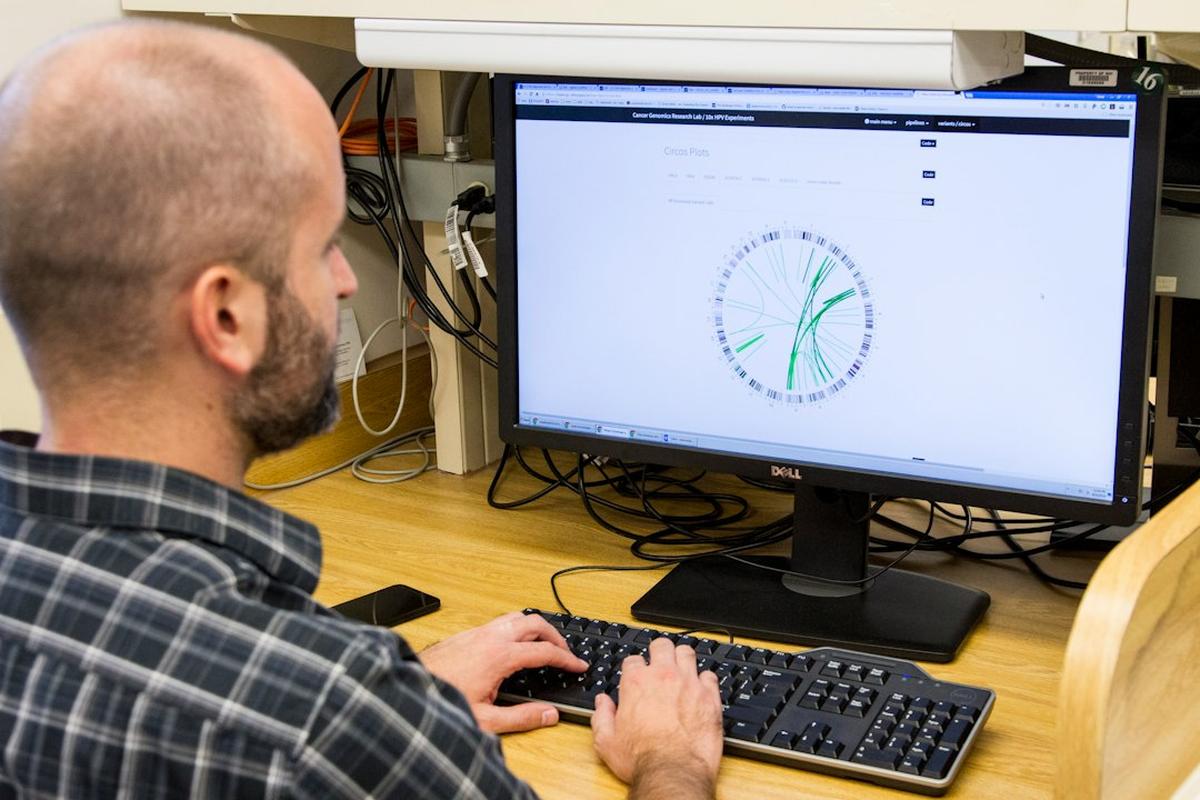The theory of evolution has been a cornerstone of biological sciences since Charles Darwin first proposed it in the 19th century. However, it was only in the mid-20th century, with the discovery of DNA and the genetic code, that scientists began to understand the molecular mechanisms underlying evolutionary processes. Today, DNA plays a crucial role in evolutionary studies, providing compelling evidence for the shared ancestry of all life on Earth.
Understanding DNA and the Genetic Code
DNA, or deoxyribonucleic acid, is a molecule that carries the genetic instructions for the development, functioning, growth, and reproduction of all known organisms. Its basic structure consists of two strands coiled around each other to form a double helix, with each strand composed of a sugar-phosphate backbone and a sequence of nitrogenous bases. These bases – adenine (A), thymine (T), guanine (G), and cytosine (C) – form the genetic code, dictating the synthesis of proteins and the regulation of various cellular processes.
The genetic code is universal, meaning it is interpreted in the same way by virtually all organisms. This universality is a powerful testament to the shared ancestry of all life, suggesting that every organism on Earth descended from a common ancestor that used the same genetic code.
DNA: A Reflection of Shared Ancestry
The idea that DNA reflects shared ancestry is based on the observation that closely related species have more similar DNA sequences than distantly related ones. For instance, humans share about 98.7% of their DNA with chimpanzees, our closest living relatives, but only about 50% with bananas, a far more distant relative.
This pattern of shared DNA extends beyond individual genes to include larger chromosomal structures and even whole genomes. For example, the genomes of humans and mice are remarkably similar in terms of both gene content and organization, despite the obvious differences between the two species. Such findings provide strong evidence for common descent, a key tenet of evolutionary theory.
DNA Comparisons and Species Relatedness
DNA comparisons, or sequence alignments, are a powerful tool for determining the relatedness of different species. By comparing the DNA sequences of specific genes or genomic regions, scientists can infer the evolutionary relationships among species, creating a “tree of life” that traces the lineage of all organisms back to a single common ancestor.
For example, DNA comparisons have revealed that humans are more closely related to chimpanzees than to gorillas, a finding that was initially surprising given the physical similarities between humans and gorillas. Similarly, DNA comparisons have shown that birds are actually a type of dinosaur, a conclusion that has revolutionized our understanding of dinosaur evolution and extinction.
Biogeography: A Testament to Evolution
Biogeography, the study of the distribution of species and ecosystems in geographic space and through geological time, provides another line of evidence for evolution. The distribution of species on Earth is not random; rather, it reflects the evolutionary history of those species and the changes in Earth’s climate and geography over millions of years.
For instance, the unique fauna of Australia, including kangaroos and koalas, can be explained by the continent’s long isolation from the rest of the world. Similarly, the diversity of finch species in the Galapagos Islands reflects the different ecological niches that these birds have evolved to fill.
Unique Features of Island Species: A Glimpse into Evolutionary Processes
Island species often exhibit unique features that provide a glimpse into the processes of evolution. For example, many island species are either significantly larger or smaller than their mainland counterparts, a phenomenon known as island gigantism or dwarfism. This is thought to result from the unique selective pressures on islands, such as limited resources and lack of predators.
Island species also often show high levels of endemism, meaning they are found nowhere else in the world. This is likely due to the isolation of islands, which prevents gene flow between island populations and mainland populations, allowing new species to evolve independently.
DNA and Geological Change: An Intricate Connection
The relationship between DNA and geological change is intricate and complex. Geological events, such as volcanic eruptions, earthquakes, and continental drift, can create barriers to gene flow, leading to the formation of new species. At the same time, changes in DNA can influence an organism’s ability to survive and reproduce in a changing environment, driving the process of natural selection.
For example, the rise of the Andes Mountains in South America created a barrier that separated populations of certain species, leading to the evolution of new species on either side of the mountain range. Similarly, the movement of continents over geological time has shaped the distribution of species and the course of evolution on a global scale.
DNA Mutations: Drivers of Evolution
DNA mutations, or changes in the genetic code, are the raw material of evolution. Mutations can occur randomly and are usually neutral or harmful, but occasionally they can be beneficial, providing an organism with a survival or reproductive advantage. Over time, these beneficial mutations can spread through a population, leading to evolutionary change.
For example, a mutation in the gene for hemoglobin, the protein that carries oxygen in the blood, led to the evolution of high-altitude adaptation in Tibetan populations. This mutation allows Tibetans to survive and reproduce at altitudes where most people would suffer from altitude sickness.
Modern Genetic Technologies and Evolution Studies
Modern genetic technologies, such as DNA sequencing and genetic engineering, have revolutionized the study of evolution. DNA sequencing allows scientists to read the genetic code of any organism, providing unprecedented insights into the mechanisms of evolution. Genetic engineering, on the other hand, allows scientists to manipulate the genetic code, testing hypotheses about the function of specific genes and their role in evolution.
For instance, the Human Genome Project, an international effort to sequence the entire human genome, has provided a wealth of information about human evolution, including our close genetic relationship with other primates and the traces of interbreeding with ancient hominid species like Neanderthals.
Criticisms and Controversies Surrounding DNA as Proof of Evolution
Despite the overwhelming evidence, there are still criticisms and controversies surrounding the use of DNA as proof of evolution. Some critics argue that the similarities in DNA between different species could be due to common design rather than common descent. Others question the reliability of DNA comparisons, pointing out that they rely on certain assumptions about the rate of mutation and the process of natural selection.
However, these criticisms are largely addressed by the robustness of the evidence from multiple lines of research, including paleontology, biogeography, and embryology, all of which support the theory of evolution. Furthermore, the predictions made by evolutionary theory have been consistently confirmed by empirical observations, reinforcing its status as one of the most well-supported theories in science.
Summary
Summary, DNA provides compelling evidence for the theory of evolution, demonstrating the shared ancestry of all life on Earth and the processes of mutation and natural selection that drive evolutionary change. As our understanding of DNA and the genetic code continues to grow, so too will our understanding of the intricate and fascinating process of evolution.
Frequently Asked Questions
What is the role of DNA in evolution?
DNA carries the genetic instructions for all living organisms. Changes or mutations in these instructions can lead to variations in traits, some of which may provide a survival or reproductive advantage. Over time, these advantageous traits can become more common in a population, leading to evolutionary change.
How does DNA provide evidence for evolution?
DNA provides evidence for evolution in several ways. For instance, the universality of the genetic code suggests a common ancestor for all life. Additionally, the degree of similarity in DNA sequences between different species can indicate their relative relatedness and shared ancestry.
What is the relationship between DNA and geological change?
Geological changes can create barriers that prevent gene flow between populations, leading to the formation of new species. At the same time, changes in DNA can influence an organism’s ability to survive and reproduce in a changing environment, driving the process of natural selection.
How do modern genetic technologies contribute to the study of evolution?
Modern genetic technologies, such as DNA sequencing and genetic engineering, have revolutionized the study of evolution. They allow scientists to read and manipulate the genetic code, providing unprecedented insights into the mechanisms of evolution.
What are some criticisms of using DNA as proof of evolution?
Some critics argue that the similarities in DNA between different species could be due to common design rather than common descent. Others question the reliability of DNA comparisons, pointing out that they rely on certain assumptions about the rate of mutation and the process of natural selection.
How are these criticisms addressed?
These criticisms are largely addressed by the robustness of the evidence from multiple lines of research, all of which support the theory of evolution. Furthermore, the predictions made by evolutionary theory have been consistently confirmed by empirical observations.
References:
- Alberts, B., Johnson, A., Lewis, J., Raff, M., Roberts, K., & Walter, P. (2002). Molecular Biology of the Cell. New York: Garland Science.
- Darwin, C. (1859). On the Origin of Species. London: John Murray.
- Futuyma, D. J., & Kirkpatrick, M. (2017). Evolution. Sunderland, MA: Sinauer Associates.
- Ridley, M. (2004). Evolution. Oxford: Blackwell Publishing.
- Watson, J. D., & Crick, F. H. (1953). Molecular structure of nucleic acids. Nature, 171(4356), 737-738.








